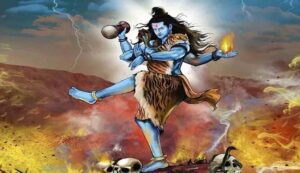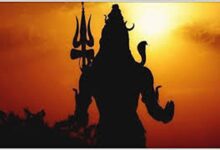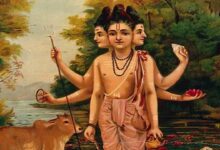Bhagwan Shiv Tandav: Why did Lord Shiva perform Tandava? Know its story
Bhagwan Shiv Tandav: Lord Shiva’s ‘Tandava’ dance is seen in Sanatan Dharma as a representation of his ferocious physique and cosmic might. In addition to fury, Lord Shiva‘s Tandava symbolizes the cosmic cycle of creation, preservation, and destruction. But the most well-known story connected to Shiva’s Tandava is about his wife Sati’s self-immolation and the ensuing horrific rage. The following is the primary and most well-known narrative of Mahadev’s Tandava.

Daksha Yagya and Sati’s Insult
Mythology claims that Prajapati Daksha’s daughter Sati was Lord Shiva’s first bride. Lord Shiva was disliked by Daksha, who refused to accept him as his son-in-law. All of the gods, goddesses, and sages were invited to a massive yagya that Daksha had planned, but he purposefully left Lord Shiva and his daughter Sati out of the invitation.
When Sati learned of this, she said that even though she had not been invited, she still wanted to visit her father’s home. Shiva made an effort to explain to her that, particularly when her father has resentment against her, it is improper to go anyplace without an invitation. Sati, however, ignored this and went to her father’s yagna. There, Daksha used strong language and insulted Lord Shiva in front of everyone.
The self-immolation of Sati
Sati was unable to tolerate her husband’s insult. She believed she was torn between her husband and father. Sati, hurt by this insult and her father’s lack of knowledge, put herself in danger by jumping into the same yagna kund.
Tandava and the ferocious aspect of Shiva
Lord Shiva grew furious upon learning about Sati’s self-immolation. His rage was so intense that the cosmos shuddered. Shiva grabbed a hair out of his matted hair and tossed it to the ground out of rage. Shiva commanded Veerbhadra, a terrible Gan that sprang from that hair, to demolish Daksha’s yagna. Veerbhadra decapitated Daksha and ruined his yagna.
Lord Shiva then began conducting Rudra Tandava throughout the cosmos while carrying Sati’s charred corpse. This dance was a representation of devastation, causing the cosmos to descend into a state similar to Pralaya. All of the gods, demons, and the world were terrified when they saw this ferocious manifestation of Shiva.
Vishnu chopping up Sati’s corpse
Shiva was so enraged that he was determined to wipe out the cosmos. To soothe Shiva, the gods appealed to Brahma and Vishnu. To appease Shiva and preserve the cosmos, Lord Vishnu used his Sudarshan Chakra to cut Sati’s mortal body into tiny fragments. Shaktipeeths were erected wherever Sati’s bodily parts fell. Mahadev became less enraged and ceased to execute the Tandava once Sati’s body was fully detached from Shiva’s lap.
Tandava’s secret and other factors
The Raudra, or destructive, side of the Tandava is portrayed in this mythology. But there are various types of Shiva’s Tandava as well.
- Ananda Tandava: Shiva does the Tandava while in a state of utter ecstasy as well as rage. It represents creation, nourishment, and disintegration in the cosmos.
- Nataraja Swarup: Lord Shiva’s Nataraja form represents his dance, which represents the universe’s ever-present motion and energy. The cycle and equilibrium of life are shown in this dance.
- Destruction of Ego: According to some traditions, Shiva also crushed the ego of demons like Apasmara by performing the Tandava. Therefore, Lord Shiva’s Tandava is a representation of cosmic truth, the cycle of creation-destruction, and ultimate power in addition to being a manifestation of rage.

